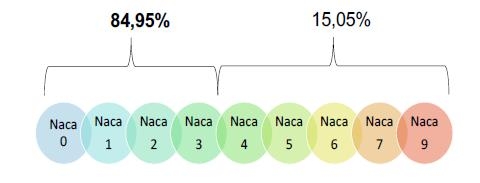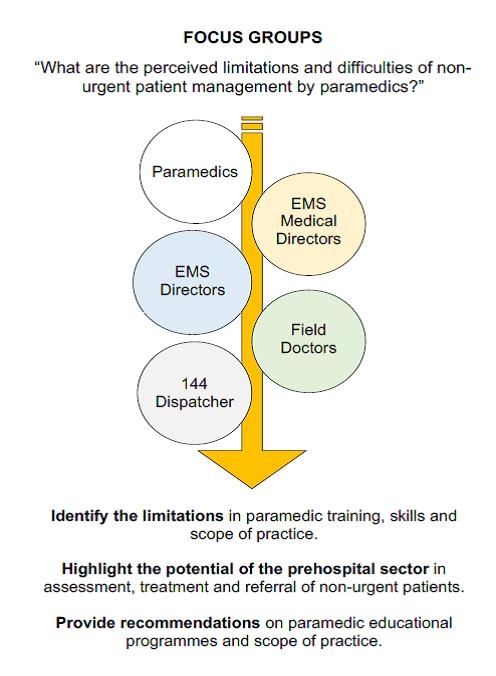Non-urgent pre-hospital patient management: is there a gap between their needs and paramedics’ skills?
T Spichiger1, A Fiorentino2, S Dénéreaz1, S Vuilleumier2
- ES ASUR, Vocational Training College for Registered Paramedics and Emergency Care, CH-1052 Le Mont-sur-Lausanne
- La Source, School of Nursing, University of Applied Sciences and Arts of Western Switzerland (HES-SO), CH-1004 Lausanne
A major shift in health issues
As in many European countries, Switzerland is experiencing a major shift in health issues due to aging population and the constant increase of chronic diseases. Consequently, ambulance interventions have drastically raised, challenging the emergency system1. This shift is associated with a large proportion of patients having a low severity score (patient NACA score 0-3), which accounts for more than 80% of the ambulance interventions (Figure 1).
The paramedic’s role, initially aimed at responding to life-threatening situations, may now be challenged by the ongoing epidemiologic changes in the population.
Our study investigates the adequacy of paramedic skills to respond to this unpreceded raise of non-urgent patients.

Figure 1. Prehospital NACA score distribution in Vaud canton Switzerland in 2017, primary interventions. Source: Direction Générale de la Santé Vaud (2018) [Personal Communication].
The National Advisory Committee of Aeronautics (NACA) score is used by EMS in Vaud canton to grade the severity of a patient’s illness or injuries2. For instance, a NACA 0 is assigned to a patient with no injury or disease while a NACA 5 means acute threat to life.
Collecting information
A literature review, including grey literature, was undertaken. Interviews were conducted with emergency healthcare providers, Swiss Paramedics Association executives, educational programs managers and Public Health representatives.
Non-urgent patients: a challentge
- Non-urgent patient management challenges the whole health system , involving pre-hospital professionals and hospital emergency departments. To deal with similar issues, some European countries have implemented new educational programmes for paramedics.
- No study in Switzerland has explored the adequacy of paramedics’ skills to assess, treat and refer, in their current practice, this large proportion of non-urgent patients.
A need to identify the gap
- An exploratory study is essential to identify to what extent there is a mismatch between the paramedic scope of practice and the management of non-urgent patients. This research should involve the main actors of the prehospital care system.
- Further investigation is necessary to analyse the outcomes of the new pre-hospital paradigms implemented to overcome this issue in Europe.
Ongoing 2019

Figure 2. Focus groups by profession: perceptions and conceptions about emblematic situations in low NACA score patient management by the paramedics.
References:
- Pittet, V., Burnand, B., Yersin, B., & Carron, P. N. (2014). Trends of pre-hospital emergency medical services activity over 10 years: a population-based registry analysis. BMC Health Serv Res, 14, 380. doi:10.1186/1472-6963-14-380
- Darioli V., Taffé P., Carron PN., Dami F., Vallotton L., Yersin B., Schoettker P., Pasquier M. (2018). Evaluation of the discriminative performance of the prehospital National Advisory Committee for Aeronautics score regarding 48-h mortality. Eur J Emerg Med. 2018 Oct 10. doi: 10.1097/MEJ.0000000000000578
Non-urgent pre-hospital patient management
Non-urgent pre-hospital patient management: is there a gap between their needs and paramedics’ skills? A Swiss case.

